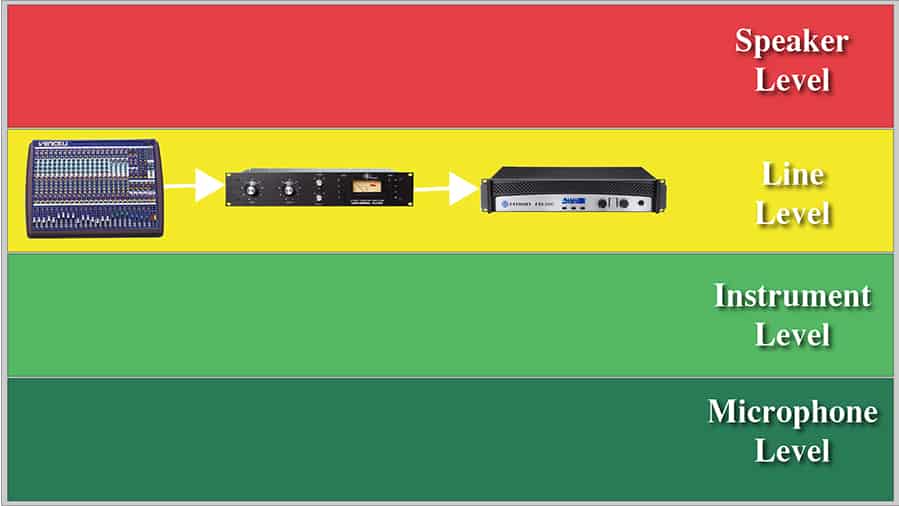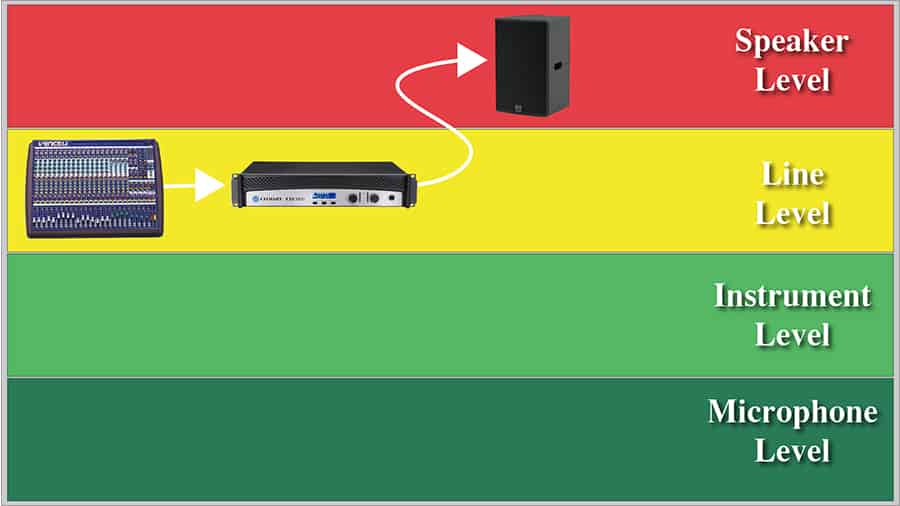In this post, you’ll learn the difference between microphone level and line level, as well as other levels commonly used in professional audio such as instrument level and speaker level.
What is the difference between microphone level and line level?
Microphones and instruments output very low signal voltages, while +4dBu is the line level is the standard voltage level for professional audio equipment.
In pro audio, you’ll generally be dealing with four types of audio signals: Mic Level, Instrument Level, Line Level, and Speaker Level
Microphone Level
A microphone captures sound by converting pressure changes in the air into electrical currents in a wire. The electrical currents created by these pressure changes are very subtle. That’s why we use a microphone preamp – to amplify the signal to a more usable level.
A microphone preamp takes in a mic level signal, amplifies it, and outputs a line level signal. This is controlled by the gain knob on your mixing console, audio interface, or outboard mic pre.

Instrument Level
The pickups of an electric guitar convert the vibrations of the strings into electrical currents. Similar to those from a microphone, the electrical currents from a guitar pickup are very weak.
A preamp can also be used to boost instrument level signals to line level.

Line Level
Once an input signal is brought up to line level, it is optimized for use with professional audio equipment, such as mixing consoles, outboard effects, and amplifiers.

Professional vs Consumer Line Level
There are two standards for line level: +4 dBu (professional) and -10 dBV (consumer).
Watch this video to learn the difference between professional and consumer line level. I also wrote a post on professional vs consumer audio levels that will help you understand the difference.
Speaker Level
Line level is adequate for sending signals between devices, but not strong enough to power a speaker.In order to power a speaker, the line level signal needs to be amplified again.
This can be done with a power amplifier. A power amp takes in a line level signal, amplifies it, and outputs a speaker level signal that is strong enough to power a speaker.

A Complete Audio System
In a complete system, you might run a microphone through a preamp and an electric guitar through another preamp.
Once those signals are at line level, you can send them through outboard effects and eventually to an amplifier, which will add enough gain to the signal to power a speaker.

